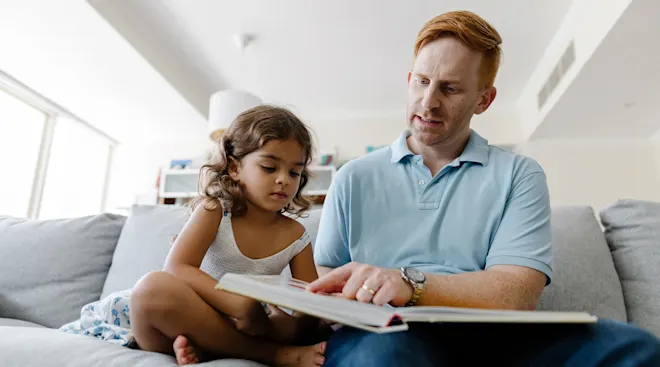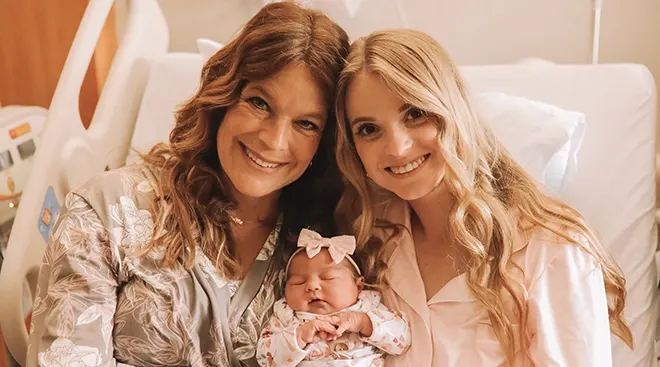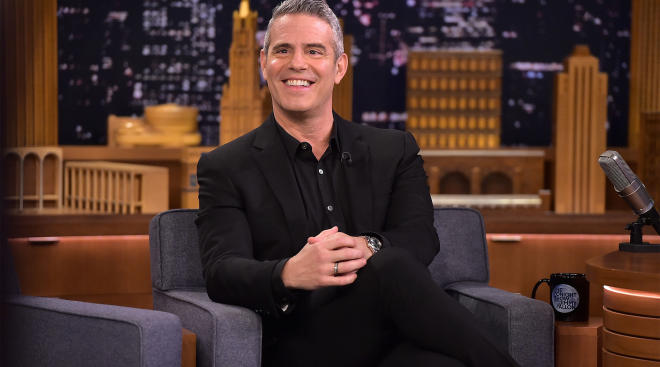Everything You Need to Know About Domestic Adoption
So you’ve decided that adoption is the way you’re going to welcome a child into your family. Now, how exactly does this process work? There are so many questions to answer just to get started that it can feel overwhelming: Should you go through an agency or use an attorney? Would you consider fostering a child? Do you want an open relationship with the birth parents? How will you afford the fees? Okay, take a deep breath, then read on for help navigating the ins and outs of bringing a new addition into your life.
Choose an adoption path
Domestic adoption can happen one of three ways: You can hire a lawyer and make it a totally private affair; you can adopt through an agency; or you can go through the foster system. While each has its pros and cons, the biggest difference is in how you find the potential birth mother. “Agencies typically locate birth parents and offer them adoptive-parent profiles to choose from,” says Joni Mantell, LCSW, founder and director of the Infertility & Adoption Counseling Center in Pennington, New Jersey. “Attorneys either teach their clients how to locate birth parents or provide them with people who can help them.” With foster care, children in the system are often there because their birth family has been deemed unfit due to neglect, abuse or other issues. See which path might be right for you.
• The agency route
In domestic agency adoption, you’ll follow a set path: first completing a home study and preadoption counseling, then building a profile that the agency will show to prospective birth parents and, finally, waiting for the right match. “Agency adoption is the most traditional route for bringing families together,” says Antoinette Cockerham, LCSW, director of the Domestic Infant Adoption Program at Spence-Chapin Services to Families and Children in New York City. “That experience carries certain benefits: Agencies have extensive understanding of adoption regulations; they have systems in place for identifying and placing children; they have specific guidelines for adoptive applicants; they provide options counseling for birth parents to help them examine all of their alternatives; and they provide adoptive and birth families with guidance both before and after a placement.”
Is it for you? If you want a stable, more predictable process, agency adoption offers just that. But know that with stability comes a little less control over how things proceed. You won’t be seeking out the birth family—you’ll have to wait until a birth mother the agency finds chooses you. To start your search for adoption agencies in your area, check out this directory from Building Your Family.
• Hire a lawyer
A private adoption gives you more flexibility in terms of how much you spend for your adoption and how it proceeds. If you use a lawyer (use the directory above to search for one near you), you can advertise in newspapers and online to try to find potential birth families; some prospective adoptive families build websites and promote them through Google ads. Your lawyer can also seek out potential matches on your behalf and show your profile to prospective birth parents before your home study has even been approved. So what’s the downside? You may find that there are more failed attempts with this route. “Preadoptive parents advertise to locate birth parents, so they are the first point of contact,” says Mantell. “The expectant parents may just be exploring their options—to place or not to place, or to look at different preadoptive couples and think about them before they decide.”
Is it for you? You���ll need to manage your expectations each time you speak or meet with potential couples. Also, all that autonomy will cost you: This is often the most expensive path to adoption.
• The foster system
Adopting through the foster system can be one of the most rewarding and least expensive paths to adoption. If you choose this course, you’ll go through a training program (anywhere from six to 45 hours of classes, depending on your state) and a home study before a child can be placed with your family. Children matched through foster care may not be available for permanent adoption immediately—you may take care of them for weeks or months before their birth parents’ rights are severed. And keep in mind that the foster program is geared toward helping reunite the birth family if at all possible, which may mean that a child goes back to his family after you’ve cared for him for a while.
Is it for you? Slightly more than half the kids in the foster system eventually return to their birth family—although 51,000 children were adopted through the foster system in 2011. And while some infants are available, only six percent of the children in foster care are under the age of one, and nearly 70 percent are over five. Plus, children placed through the foster system may have some form of trauma from their history, so be prepared to handle emotional issues. To search for local foster care services, visit adoptuskids.org.
Your relationship with the birth family
For decades, adoption records were closed and sealed, and adoptive parents never met with birth parents. Closed adoptions are still possible, but these days there is usually some openness. Adoptees have won legal battles to get access to information about their origins, and most adoption experts agree that openness benefits everyone involved: It provides the ability to obtain medical information, to get a true picture of the child’s beginnings, and to ease the feeling of rejection that some adopted children feel in connection with their birth family.
There are many ways to do an open adoption, and together you’ll all need to decide what will work best for you, the child, and the birth mother. Some families communicate only through their agency or lawyer, sending annual pictures and updates, while others become extremely close to the birth families, inviting them to holidays and family events. For many families, the relationship changes over time; the birth mother may distance herself, or your child may want to reach out to his birth mother during a particularly emotional time.
Why the paperwork matters
Most agencies or lawyers will ask you to fill out a packet of information that they can share with prospective birth mothers. It usually includes details about your careers, hobbies and family life, as well as photos of your home, your pets and yourselves. People put a lot of thought into this—after all, it’s the first impression you make. Share a glimpse of your personality and what makes you special, whether it’s your passion for travel, your deep religious faith or your love for camping and the great outdoors—details that will help prospective birth parents understand what their child’s life might be like with your family. “While you may feel you have to market yourself to get selected, creating an adoption plan together is about something bigger and deeper,” says Mantell. “Just looking at it as marketing misses the heart of the matter—birth parents have an extremely difficult decision to make and need to feel some level of connection. Make your profile and your communication more sensitive and human. Give them something to relate to that feels more real.”
In addition to this profile, you’ll need to go through a home study. This usually occurs early in the process, before you’re matched with a birth family, and your agency or lawyer can help you arrange it. You don’t have to be white-picket-fence picture-perfect to pass this test, but a social worker will take a tour of your home to confirm it’s a good place to welcome baby. She will ask about your family history, health and financial situations and your parenting philosophy (which will all be verified). Be prepared for a lengthy interview and possibly background checks and letters of reference. There may also be an educational component that covers topics related to adoptive parenting.
Funding your adoption
Adoption fees vary wildly in domestic adoption. For foster adoptions, the cost can be next to nothing, while a private infant adoption with an agency or lawyer could run into the tens of thousands of dollars, especially if you have multiple failed adoptions and paid for the birth mother’s doctors’ visits and other related medical expenses. (While some adoption agencies will charge you for birth mother expenses in connection with a failed adoption, this practice is more common in lawyer-managed private adoptions.) The average cost for an adoption with an attorney or agency, according to a recent survey by Adoptive Families magazine, is between $20,000 and $40,000. But before you faint from sticker shock, keep in mind that many families qualify to recoup some of the fees through the adoption tax credit, which is currently up to $13,190 per child. You and your partner should also check with your human-resources departments at work: Some companies offer adoption credits to employees who go this route. Families typically gather the funds for their adoption from savings, a home equity line of credit or other loans—even fundraising or crowdfunding.
Regardless of the tax credit, it’s a lot of money. So, where is it all going? It covers fees for services provided by the social worker, your attorney or your agency, for starters. In private adoption you may pay for advertising to seek out birth mothers. In some cases, you may choose to pay for some of the birth mother’s medical expenses leading up to the birth. And if the baby you’ve been matched with lives far from your home, you’ll have travel expenses to factor in as well.
Managing your expectations
Once you’ve made it through the home study and fine-tuned your profile, you face the hardest part: waiting for the right match. The average wait is two years, but it can be much shorter or longer, depending on your luck and your “dream child” parameters. (If you’re heart is set on a healthy white newborn, you may wait longer than a family who is open to other ages, races or special-need situations.) But keep in mind that speed shouldn’t be the big factor. “Fast is not always better—or realistic, for that matter,” Mantell says. “What’s more important is how the agency or attorney treats the expectant parents.”
You may find other bumps in the road on your path to building a family—many adoptive families experience one or more failed placements before they successfully adopt. A failed adoption can be emotionally devastating, and may also cost you financially if you pay for birth family expenses that can’t be recouped.
But talk to any parent who’s gone through the process and she’ll tell you that no matter how much paperwork and waiting goes into it, the result—a brand-new child to love—makes it all worth it.
Navigate forward to interact with the calendar and select a date. Press the question mark key to get the keyboard shortcuts for changing dates.




















































